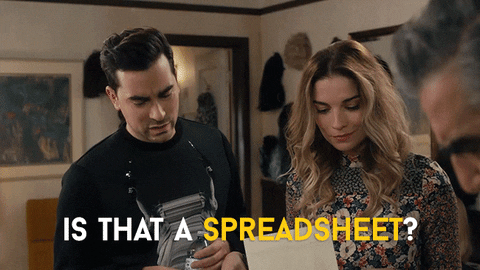Newsflash: traditional skills frameworks are no longer fit for purpose. Static, rigid and often out of date before they’re even rolled out, these models struggle to keep up with the pace of change.
Organisations need a smarter, more flexible approach – one that reflects how people work, how roles evolve and how industries change over time. That’s where dynamic skills management comes in.
The trouble with traditional skills frameworks

Skills frameworks have long been a go-to tool for L&D, talent and workforce planning teams. Typically structured as hierarchical spreadsheets or lists of competencies per role, they’re meant to provide clarity on what’s needed, where gaps lie and how people can progress.
A traditional skills framework is typically a static, top-down model that outlines the skills needed for specific roles within an organisation, as well as skill proficiency levels and expected tasks or behaviours.
They’re usually very generic and detached from real-time work, and may rarely or never be updated to reflect changes in the market, workplace or specific roles. They’re also tricky to personalise as they’re one-size-fits-all templates, which don’t take into account individual preferences, strengths, interests or backgrounds, creating an uneven playing field which undervalues or overvalues certain skills.
The result? A static view of skills that feels out of step with the real-time nature of work. This makes it harder for organisations to stay competitive, and for employees to understand how they can grow within the constraints of a skills framework that may not feel relevant to their role or career goals.
Why dynamic skills management works better
Dynamic skills management is an approach that treats skills as living, evolving data – not a fixed list in a spreadsheet.
Best-of-breed dynamic skills management is powered by AI and real-time insights, and continuously maps, updates and refines your organisation’s skills landscape. This makes the data more accurate, timely and relevant, keeping everyone agile and armed with the skills they need to tackle today’s and tomorrow’s challenges.
Here’s what makes it different:
- Real-time updates based on real behavioural activity, giving a more holistic, accurate insight into what skills are really showing up across the business
- Context-aware insights that reflect how skills show up in different roles, teams or locations
- Forward-looking intelligence that highlights emerging needs and skills gaps, so you’re not just focusing on the past – you’re able to plan for the future
This level of responsiveness helps talent teams make better decisions about recruitment, upskilling, mobility and workforce planning. It also empowers individuals with clear, meaningful guidance on how to develop their careers. It really is a win-win!
How to evolve your skills management approach

Moving from static to dynamic skills management doesn’t mean throwing everything out and starting again. It’s about shifting your mindset – and your systems.
Here’s how to start:
- Accept that your current frameworks are a snapshot, not the full picture
Static, spreadsheet-based skills frameworks can still offer a useful baseline, but they must be supplemented with dynamic, real-time data.
- Involve your people in the process
Ask employees to validate, update and reflect on their own skills. This not only improves accuracy and brings your understanding of skills in the business up to date, but helps create a culture of shared ownership.
- Connect skills to everyday workflows
Make skills visible where they matter – within performance reviews, learning journeys, internal job boards and project planning, as well as in the day-to-day flow of work, such as a daily or weekly summary of skills demonstrated and suggested development areas.
- Use the right technology
Manual skills tracking can’t scale. AI skills intelligence tools automate the process of gathering, interpreting and actioning skills data, making it possible to stay truly up to date and act swiftly on the emerging skills you’re seeing.
Dynamic skills management in action
Our new AI skills intelligence tool is designed to help learning and talent teams progress from static spreadsheets to dynamic skills management. It enables organisations to adopt an agile approach by bringing together:
- Live skills intelligence: Monitoring skills directly in the flow of 100% genuine tasks and conversations, ensuring real skills are captured as they happen
- Personalised skills profiles: Automatically generated and enriched over time, giving employees visibility and control over where they are now and where they need to get to
- Smart workforce recommendations: Helping managers and HR leaders make better decisions about reskilling, redeployment and recruitment
- Integrated learning journeys: Connecting skills to development opportunities, internal mobility and strategic priorities for happier, more engaged, more loyal employees
The result? A clearer, more responsive picture of capabilities, competencies and skills across your organisation, with the ability to act on it in real time.
From ability to agility
In times of uncertainty, skills agility is one of the most powerful assets a business can have. Whether you’re responding to technological disruption, shifting customer demands or workforce changes, the ability to rapidly identify and act on evolving skill needs is key.
Connecting the dots between real abilities and the business decisions taken to make the most of them is critical for any organisation looking to operate in a more agile, future-looking way. With dynamic skills management, you’re not just looking at skills at a single point in time, displayed in an artificial environment – you’re constantly monitoring and measuring skills, as well as what’s impacting the way they show up in daily tasks.
Our upcoming AI skills intelligence tool puts insight, strategy, and agility at the heart of your talent ecosystem – and it’s coming very, very soon.
.png?width=1280&name=Emerging%20skills%20(2).png)